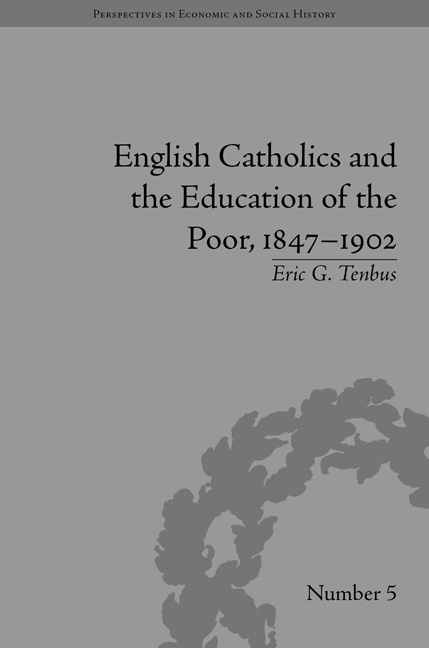Book contents
- Frontmatter
- CONTENTS
- Dedication
- Preface and Acknowledgements
- 1 A Church Divided and the Educational Solution
- 2 The Status of Catholic Education at Mid-Century and the Catholic Educational Philosophy
- 3 Educational Obstacles to Overcome
- 4 English Catholics and the Politics of Education, 1847–70: Preparing for Battle
- 5 English Catholics and the Politics of Education, 1870: The Battle Begins
- 6 English Catholics and the Politics of Education, 1871–90: Engaging With the Enemy
- 7 English Catholics and the Politics of Education, 1891–1902: A Strategy for Success
- 8 Catholic Education and Identity after the Balfour Act: The Battle Ends but the Fight Continues
- Notes
- Works Cited
- Index
1 - A Church Divided and the Educational Solution
- Frontmatter
- CONTENTS
- Dedication
- Preface and Acknowledgements
- 1 A Church Divided and the Educational Solution
- 2 The Status of Catholic Education at Mid-Century and the Catholic Educational Philosophy
- 3 Educational Obstacles to Overcome
- 4 English Catholics and the Politics of Education, 1847–70: Preparing for Battle
- 5 English Catholics and the Politics of Education, 1870: The Battle Begins
- 6 English Catholics and the Politics of Education, 1871–90: Engaging With the Enemy
- 7 English Catholics and the Politics of Education, 1891–1902: A Strategy for Success
- 8 Catholic Education and Identity after the Balfour Act: The Battle Ends but the Fight Continues
- Notes
- Works Cited
- Index
Summary
‘The Catholic Church is springing up again’, boasted the Archbishop of Westminster, Cardinal Nicholas Patrick Wiseman, before a captive audience of European Catholic leaders in Malines, Belgium, on 21 August 1863. ‘It had left its tap root’, he continued, ‘under the religious soil of England, from which new suckers are now shooting upwards; the sap which was believed to be drained out is rising in them once more. The old plant scents again the waters, and revives, endowed with a marvellous fertility.’ As Wiseman regaled his audience with the triumphs of the Catholic faith in England since the restoration of the hierarchy had placed him at the titular head of English Catholicism thirteen years before, he realized he had to step gently around the one matter that he uncharacteristically described in rather blunt, truthful terms which betrayed a certain lack of success. That issue was education. ‘Our weak side is the education of our children’, he declared, ‘whom our poverty prevents us from bringing up as we would desire’.
These statements comprise two of the central messages of this study. The first is the enthusiasm and confidence reflected in Wiseman's portrait of his Church in mid-nineteenth-century Britain. The second is the sober realization that, despite recent advances for Catholics in England and Wales, education, namely education of the Catholic poor, was an issue in need of tireless effort and one that had to be a priority for Catholics.
- Type
- Chapter
- Information
- Publisher: Pickering & ChattoFirst published in: 2014



